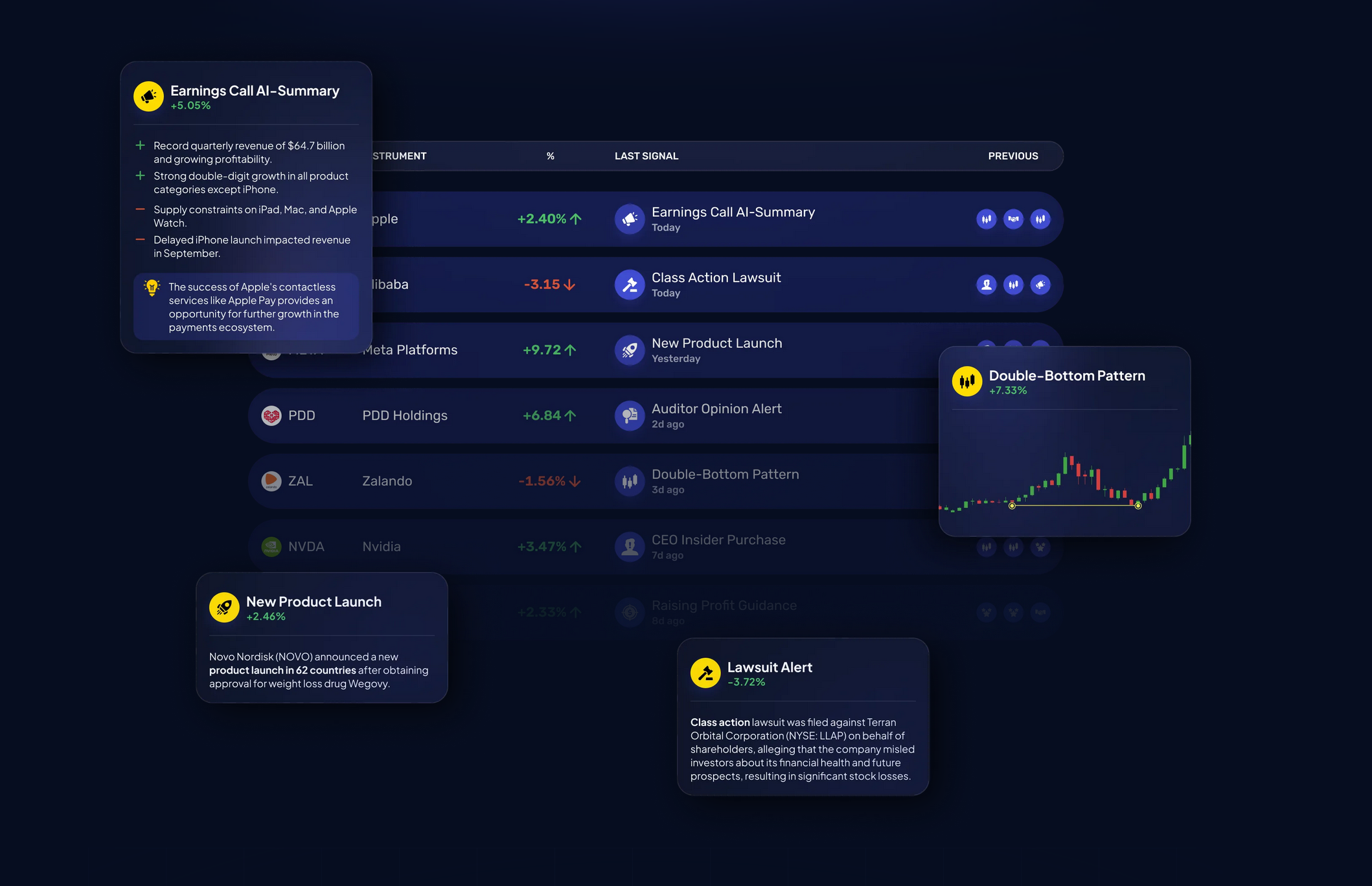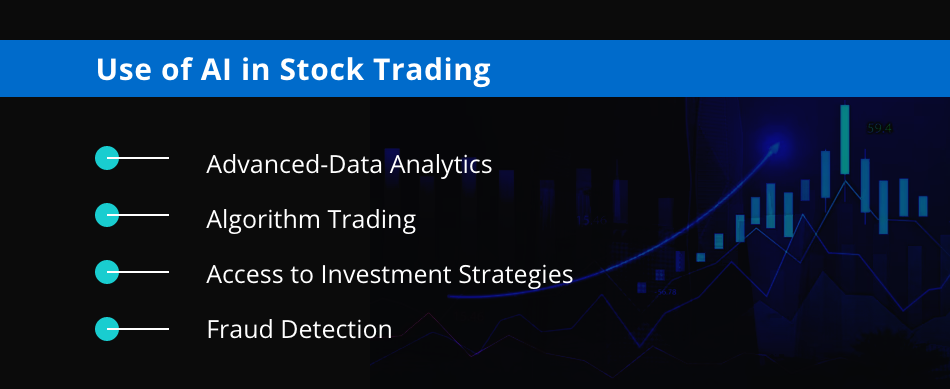20 Good Advice For Choosing AI Stock Picker Platform Websites
20 Good Advice For Choosing AI Stock Picker Platform Websites
Blog Article
Top 10 Ways To Evaluate The Privacy And Security Of Ai Stock Trading Platforms
Security and privacy are paramount when using AI software for predicting and analyzing stocks since they are often handling sensitive financial data as well as personal data. A breach or misused data can cause significant financial loss as well as reputational damage. Here are 10 guidelines on how you can evaluate the privacy and security features of these platforms.
1. Consider Data Encryption
Transmitting data encrypted Check that the platform is using SSL or other secure protocols (e.g. TLS/SSL) for encryption of data transmitted between your devices and their servers.
Security in the rest: Verify that sensitive information stored on platform servers is encrypted using secure encryption standards.
End-to-end encryption: Check whether your platform offers encryption from beginning to the end for data and communications that are highly sensitive.
2. Examine the Authentication Mechanisms
Two-factor authentication (also called copyright) is an excellent method of increasing security.
Check for biometric authentication.
Password policies. Verify that the platform has strong password policies (e.g. minimum length and the requirement for complexity).
3. Verify Compliance
Financial regulations: Make sure you are in conformity with the relevant financial regulations (e.g. SEC FINRA MiFID II).
Data protection laws. Check compliance with data privacy laws in your area (e.g. CCPA, GDPR) in the event that it applies.
Audit certifications: Determine if the platform has undergone third-party security audits or holds certificates (e.g., SOC 2, ISO 27001).
4. Review Data Access Controls
Role based access: Use access controls based on role to restrict access to information to authorized users.
Verify that you have the ability to set permissions at granular levels for different team members.
Activity monitoring: See whether the platform records and monitors user activity for suspicious behavior.
5. Assess Vulnerability and Management
Regular updates: Ensure that your platform is updated with software frequently to patch any vulnerabilities.
Testing for penetration: Check if the platform undergoes regular penetration testing to discover and address security vulnerabilities.
Make sure the platform has a bug bounty to encourage researchers to discover weaknesses.
6. Evaluate Data Privacy Policies
Transparency. Review the platform's Privacy Policy to understand the nature of data collected and how it will be utilized.
Data reduction: Only collect data necessary to support the platform's functionality.
Third-party data sharing: Check that the platform is willing to share your information with a third-party and in the event that it is then, in what way.
7. Secure API usage must be checked
API security: Make sure that the platform's API utilizes secured authentication methods (e.g., OAuth, API keys) and encrypts data exchanges.
Rate-limiting: Determine if the API has a limit on rate to stop abuse and brute force attacks.
Check the access logs to see if they are being monitored and audited for compliance.
8. Evaluate the Recovery and Response to Incidents
Plan for response to an incident The platform has a solid plan to handle data breaches and security incidents.
Policies for notification: Make sure that users are informed promptly in case of a security breach.
Backups of data - Make sure the platform has a strategy for disaster recovery, and that it regularly backs data up.
9. Review physical security measures
Data center security: Ensure that the platform's servers are hosted in secure data centers, with physical security measures (e.g., surveillance, access controls).
Redundancy Verify the redundant platforms of the platform to ensure data availability if any component fails.
Geographic distribution: To improve resilience, verify that the data is distributed over multiple geographic locations.
10. Test Privacy Controls for Users
Data deletion: Ensure that the platform will allow you to erase your data permanently if you decide to stop using the service.
Privacy settings: See if you have privacy settings that allow you to limit the information shared and made public.
Verify if an anonymization is being performed on the data used for machine learning or analytics.
Bonus Tips
Feedback from users and reputation: Review feedback and reviews from users to assess the credibility of the platform's privacy and security.
Trial period: Try out the privacy and security tools of the platform using a a free demo.
Customer Support: Make sure whether the platform is able to offer a solid support service in the event of security issues.
These tips will help you assess the privacy and security of AI trading platforms that forecast or analyze stock prices. Your data and financial information will be protected. A secure platform not just protects your assets, but can also build trust and confidence in its services. Take a look at the best ai investing for more info including ai for stock predictions, best ai stock trading bot free, options ai, chart ai trading assistant, trading with ai, ai for trading, ai stock trading, ai trade, ai for stock trading, ai stock market and more.
Top 10 Suggestions For Maintaining And Updating Ai Trading Platforms
To ensure that AI-driven stock trading platforms and prediction platforms remain secure and efficient They must be maintained and updated regularly. Here are 10 tips for evaluating the maintenance and update procedures:
1. Updates will be posted frequently.
Find out the frequency at which updates are released (e.g., every week, each month, or quarterly).
Why: Regular updates are an indication of active development and a willingness to respond to changes in the market.
2. Transparency in Release Notes
Read the release notes on your platform in order to determine what improvements and changes were implemented.
Transparent release notes demonstrate the platform’s commitment to continuous improvement.
3. AI Model Retraining Schedule
Tip: Find out how often AI models are trained with new data.
Why: Markets evolve, and models must adapt to remain relevant and accurate.
4. Fixes for bugs and issue resolution
Tip: Assess how fast the platform can address technical issues or bugs reported by users.
Why? Prompt bug fixes will ensure that the platform will remain functional and secure.
5. Security Updates
TIP: Check if the platform is updated regularly with its security protocol to secure personal data of users.
Why is it important: Security in financial platforms is essential to guard against breaches and fraud.
6. Incorporating New Features
Tip: See whether there are any new features that are being introduced by the platform (e.g. advanced analytics or data sources, etc.) in response to feedback from users or market trends.
Why? Feature updates are an indication of the company's ability to innovate and respond to the needs of users.
7. Backward compatibility
Check to ensure that the updates won't affect existing functionality or necessitate major reconfiguration.
What is the reason? Backward compatibility guarantees users have a smooth experience when they transitions.
8. Communication between Maintenance and Users Workers
You can assess the dissemination of maintenance schedules and downtimes to users.
Why? Clear communication builds trust and reduces the chance of disruptions.
9. Performance Monitoring, Optimization and Analyses
Tip - Check that the platform continually monitors metrics of performance (e.g. accuracy, latency) and then optimizes the system.
The reason: Continuous optimization is necessary to ensure the platform remains efficient.
10. Conformity to regulatory changes
Check whether the platform's features and policies have been updated to comply with new financial regulations, or data privacy laws.
The reason: It is crucial to follow the rules in order to minimize legal risk and keep confidence among users.
Bonus Tip: User feedback integration
Examine whether the platform integrates feedback from users in its update and maintenance processes. This indicates a strategy that is based on user feedback and a commitment to improving.
You can look at these elements to make sure you are selecting a platform for AI stock forecasts and trading that is up-to the minute, well-maintained and capable of adapting itself to the changing dynamics of the market. View the best more tips here for ai investment tools for more recommendations including ai trading tool, ai stock predictions, trading ai tool, how to use ai for copyright trading, ai tools for trading, trading ai tool, ai stock investing, ai stock trader, investing with ai, ai investment tools and more.